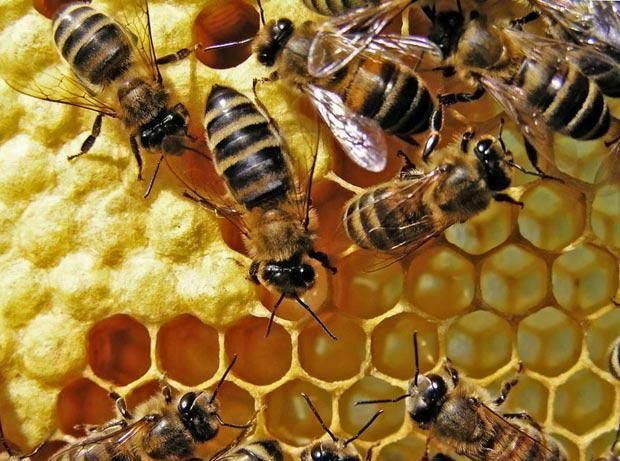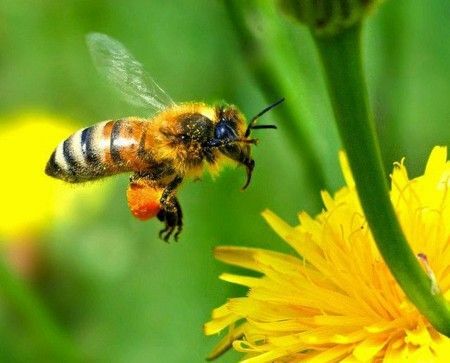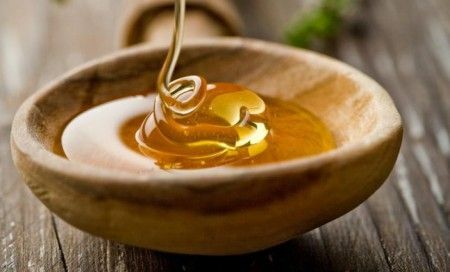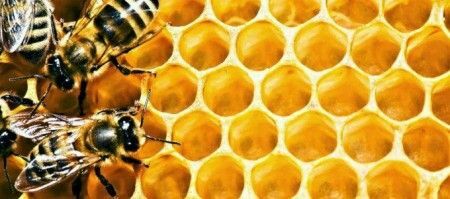The only insect that produces a product suitable for humans is a bee. From morning to night, striped workers flit from flower to flower in search of fragrant nectar, which subsequently turns into medicinal honey. But not everyone knows how this amazing process is going on. We offer a detailed look at how bees make honey and find out what they need it for.

Where does honey come from?
Hairy workers do a tremendous job before a nourishing product is obtained from flower nectar. This process can occur both in conditions of wild nature, for example, in hollows of trees, and on an apiary in hives built by man.
The bee family is large enough and can number up to 60,000 individuals. It consists of:
- of the uterus;
- of drones;
- of bee-receivers;
- intelligence bees;
- bee pickers.
The main role is played by the uterus, which lays eggs. The young, a few days old, are engaged in cleaning the hive and feed newly hatched larvae, and the bulk consists of female individuals - these are the bees of the field who extract nectar and bring it to the nest.
An interesting fact! In the bee family there are also males, but they do not collect nectar, but only fertilize the uterus. After the need for them passes, the bees kill or expel the drones from the nest, beyond which they still perish.
The source of nectar
The bees extract fragrant nectar from the plants-honey-plants, it can be flowers, bushes and trees. Their work begins in the early spring, as soon as the first inflorescences begin to blossom, and laboriously work until late autumn.

Striped flying toilers can be conditionally divided into two groups:
- intelligence bees that fly in search of the plants-melliferous;
- bees collectors, collecting fragrant nectar and supplying it to the hives.
When the scouts discover the source of the feed, they collect a small amount of it and fly to the nest. There they make a kind of dance, with the help of which they explain to the collectors where the active honey is located. After this, the scout again goes to the place of discovery of nectar, dragging behind him huge hordes of bees-pickers.
Upon arrival at the destination, the insects descend on the inflorescence and with the help of special receptors located on the legs, check the presence of nectar. Making sure that he really is, they are typing it into the mouth, using the proboscis for this. Combined with the salivary secret, nectar is enriched with useful enzymes that lay the beginning of turning it into medicinal honey. Having collected a certain amount of food, the pickers bring it to the beehive and pass it on to the bee-consuls.
An interesting fact! Receivers are young bees who previously cleaned the hives and were responsible for feeding the larvae.
From nectar to honey
Now you can see how bees make honey. The process of processing is carried out by bee-consensers. Honey from nectar is obtained due to evaporation of excess liquid and decomposition of sucrose into simple sugars - fructose and glucose.
To make the moisture go away, the bees fill the cells with nectar by about a quarter of the volume and increase the ventilation in the hive. Thus, the liquid, turning into steam, quickly leaves the house. As a result, the nectar becomes thicker, freeing up the space in the honeycomb for a new liquid portion, which the bees pour over that droplet. When the consistency becomes very dense and the cell is filled to the top, the pickers move this honey to the top of the honeycomb, where it ripens.
For the cleavage of sucrose, the bee uses its secret. She collects nectar and mixes it with saliva, releasing it several times through the proboscis and drawing it back. Thus, nectar is saturated with enzymes. After honey is added to the cells, where the process of hydrolysis of sucrose continues until the product ripens.

Ready honey in honeycomb honeycombs is covered with wax lids. This product is completely ready for use. By the way, this kind of honey is considered the most useful for health.
Why honey bees?
Now it is worth to find out why bees make honey. The fact is that for them it is a food that is used during wintering. And since the bee family has a rather impressive number of individuals, they also extract it in huge quantities. In the warm season, shaggy toilers work, as they say, "indefatigably" to provide themselves with a sufficient amount of food. And if you take into account the fact that most of the finished product is taken away by a person, it is even difficult to imagine what a grandiose job these insects should carry out.
In the process of collecting feed, the bees also fertilize the seeds of honey plants, carrying pollen on their feet. All summer they fly from flower to flower, producing the so-called fruitful "cooperation" with them.
Despite severe frosts, bees are able to maintain a normal temperature for their livelihoods in the hive. For this, they wag their wings from time to time, creating a draft. Thus, they waste unnecessary energy and are not supercooled, and larvae and eggs get a good airflow and do not overheat.

In winter, wax lids are removed from the honeycomb, and the mature honey is eaten by bees. He serves food not only for adults, but also for larvae. A high-calorie product is very important for insects, as it gives them a huge amount of energy and the forces necessary to harvest a new crop.
